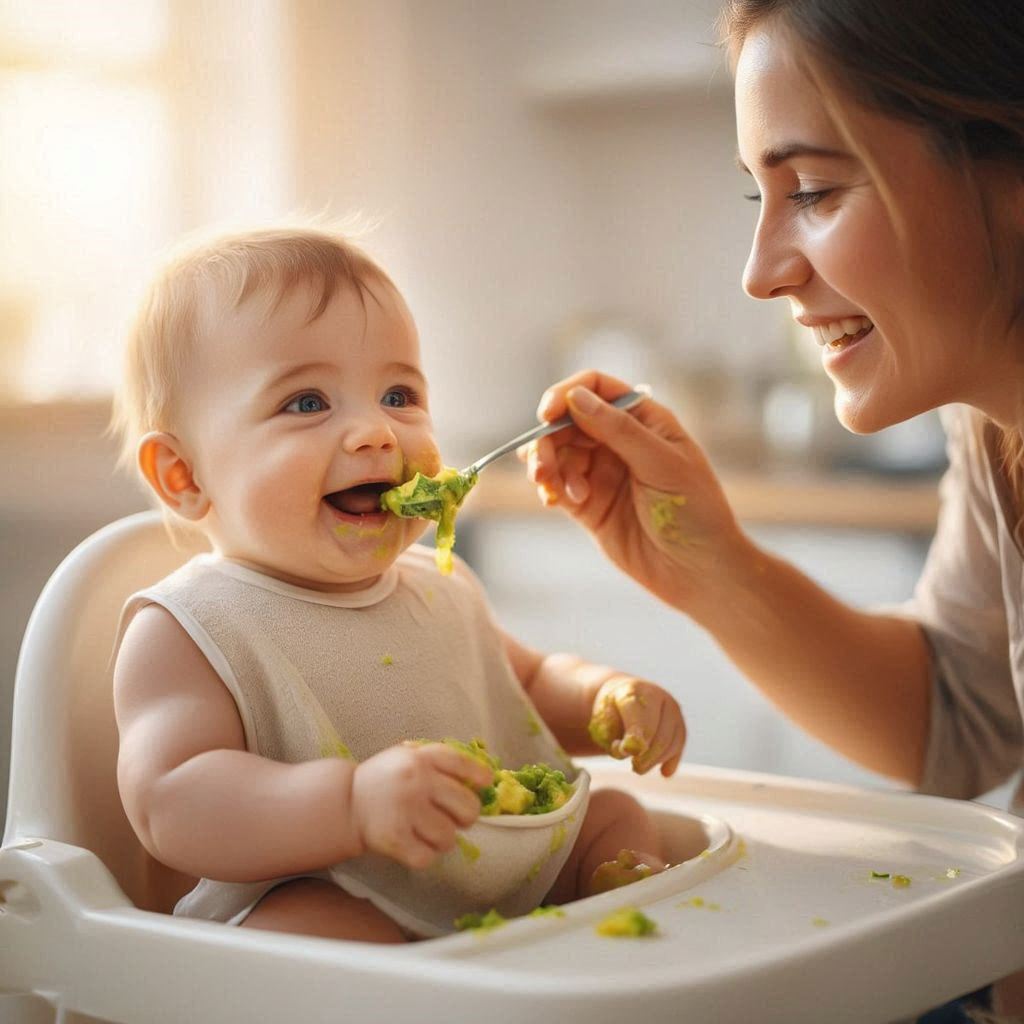Watching your baby taste food for the first time is such a sweet and unforgettable moment. It’s one of those milestones that says, “Wow, my baby is really growing up!”
But for many parents, the question quickly follows — “What are the best first foods for my baby?” or “How do I start solids safely?”
Don’t worry, this guide will walk you through everything you need to know: when to start, what foods to try first, and how to make mealtime safe, fun, and full of smiles.
When to Start Solid Foods
Most babies are ready for their first bite between 4 to 6 months, but it depends on their development. Here are a few signs your baby might be ready:
- They can sit up with support.
- They’ve lost the “tongue-thrust” reflex (no longer push food out).
- They show curiosity when you’re eating.
Always consult your pediatrician before starting solids, every baby is different.
The Best First Foods to Introduce

When you start offering food, begin with single-ingredient, smooth purees. These help your baby get used to texture and taste while making it easy to spot any allergic reactions.
Here are the best first foods every baby should try:
1. Avocado
Soft, creamy, and packed with healthy fats that support brain growth. Mash it with a spoon or blend it with a little breast milk or formula.
2. Banana
Naturally sweet and gentle on tiny tummies. Easy to mash and perfect for introducing flavor.
3. Carrots
Rich in vitamin A and easy to digest. Steam until soft, then blend into a smooth puree.
4. Sweet Potatoes
Full of fiber and vitamins — plus babies love the mild sweetness!
5. Apples or Pears
Steam or boil until tender, then mash or puree for a smooth fruit treat.
6. Oatmeal or Rice Cereal
Iron-fortified baby cereal is a classic first food. Mix it with breast milk or formula for a familiar taste.
Pro Tip: Introduce one new food at a time and wait 2–3 days before adding another to watch for allergies or sensitivities.
How to Introduce Solids Gently

Start small — 1–2 teaspoons once a day is enough at first. Keep it relaxed, fun, and baby-led. Remember: the goal in the beginning isn’t to eat much, but to explore.
Tips for Success:
- Choose a calm time (not when baby is tired or too hungry).
- Use a soft-tipped baby spoon.
- Expect messes — and embrace them!
- Praise and smile — babies love your reactions.
Don’t Forget Water
Once your baby starts solids, offer a few sips of water with meals. This helps them learn how to drink and keeps digestion smooth.
How One Mom Did It
“When I introduced solids to my son, I started with mashed avocado. He made funny faces, but after a few tries, he loved it. Every week, I added one new food, and by month two, he was excited every time he saw his spoon!”
Small, patient steps like this make all the difference.
Final Thoughts
Every baby’s journey with food is unique. Stay patient, go slow, and celebrate the messy, joyful process. Before you know it, your little one will be reaching for that spoon all by themselves!
FAQs
1. When should I start giving my baby solid foods?
Most babies are ready between 4–6 months, depending on their growth and development. Always check with your pediatrician before starting.
2. Can I mix breast milk or formula with purees?
Yes! Mixing familiar flavors helps your baby transition smoothly to solids.
3. What foods should I avoid at first?
Avoid honey, whole nuts, cow’s milk, and foods that are choking hazards like grapes or chunks of meat.
4. How often should I feed solids at the beginning?
Start with once per day, then gradually increase to two or three times as your baby shows interest.


Leave a Reply